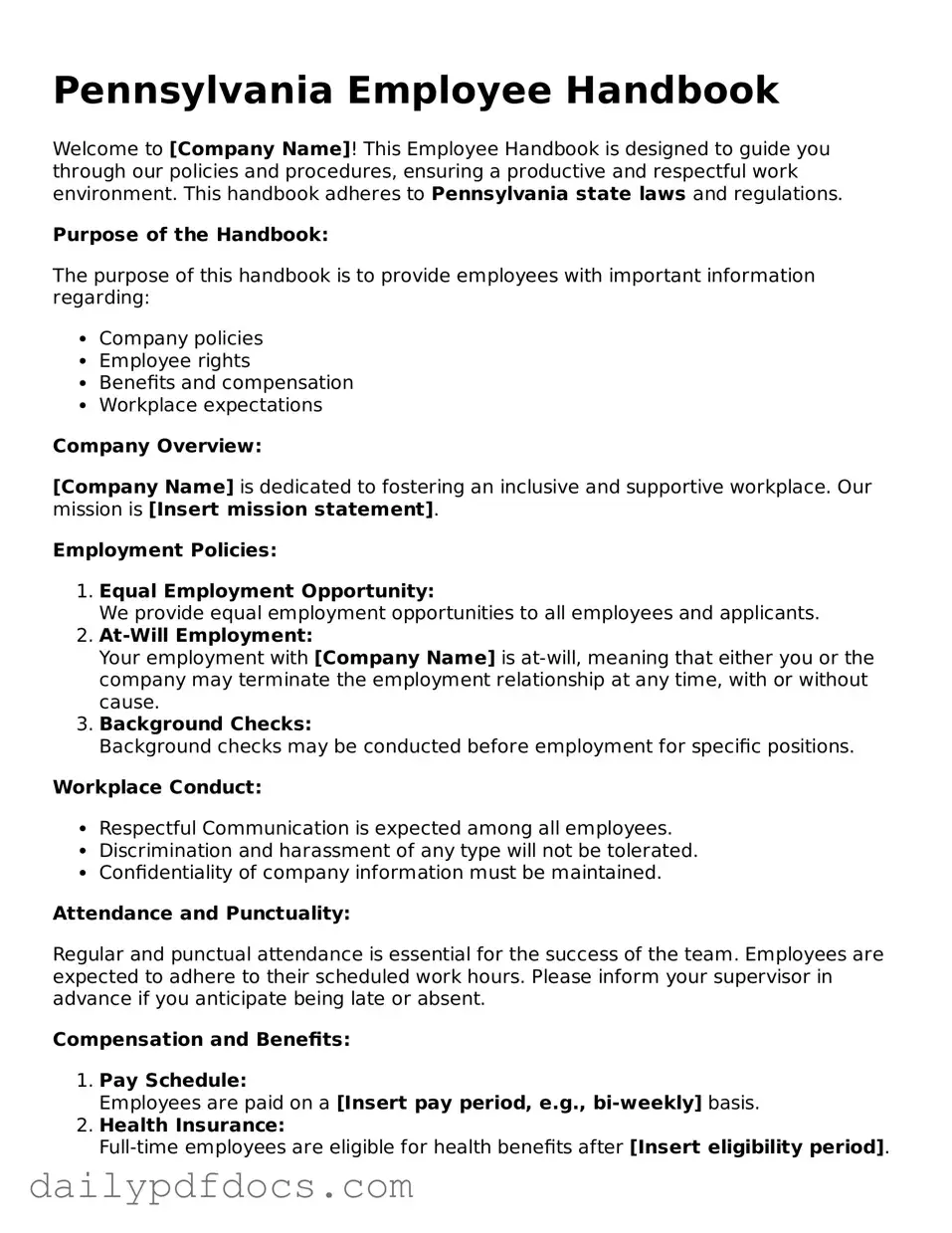What is the Pennsylvania Employee Handbook form?
The Pennsylvania Employee Handbook form is a document that outlines the policies, procedures, and expectations of an employer regarding employee conduct and workplace standards. It serves as a guide for employees to understand their rights and responsibilities within the organization.
Why is an Employee Handbook important?
An Employee Handbook is crucial because it helps establish clear communication between employers and employees. It sets the tone for workplace culture and provides essential information on topics such as company policies, benefits, and disciplinary procedures. A well-structured handbook can also help protect the employer from potential legal issues by ensuring that employees are aware of their rights and obligations.
Who should receive a copy of the Employee Handbook?
All employees should receive a copy of the Employee Handbook. This includes full-time, part-time, and temporary staff. It’s important for everyone to have access to this information to ensure they understand the company’s expectations and policies. Employers may also consider providing a copy to new hires during the onboarding process.
How often should the Employee Handbook be updated?
Employers should review and update the Employee Handbook regularly, ideally at least once a year. Changes in laws, company policies, or organizational structure may necessitate updates. Keeping the handbook current ensures that all employees have the most accurate information and helps mitigate any potential misunderstandings.
What should be included in the Employee Handbook?
The Employee Handbook should include a variety of topics such as company history, mission statement, workplace policies, code of conduct, benefits information, and procedures for reporting grievances. Additionally, it should cover topics like anti-discrimination policies, health and safety guidelines, and attendance requirements. Including a section for frequently asked questions can also be beneficial.
Is it necessary to have employees sign an acknowledgment of the Employee Handbook?
Yes, having employees sign an acknowledgment form is highly recommended. This signature indicates that the employee has received, read, and understood the handbook. It serves as a record that the employee is aware of the company policies and can help protect the employer in case of disputes.
Can the Employee Handbook be used in legal disputes?
Yes, the Employee Handbook can play a significant role in legal disputes. If a disagreement arises regarding workplace policies or employee behavior, the handbook may serve as a reference point. Courts may look to the handbook to determine if the employer followed their stated policies and whether the employee was informed of their rights and responsibilities.
